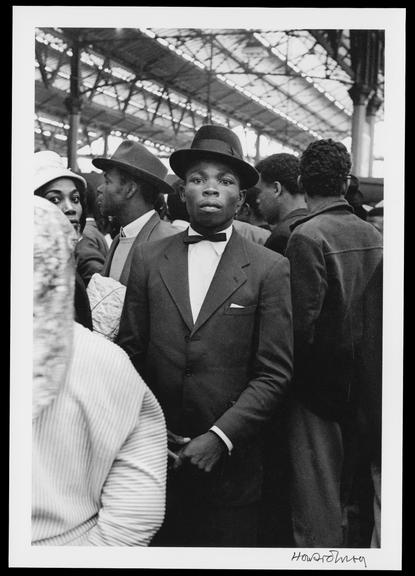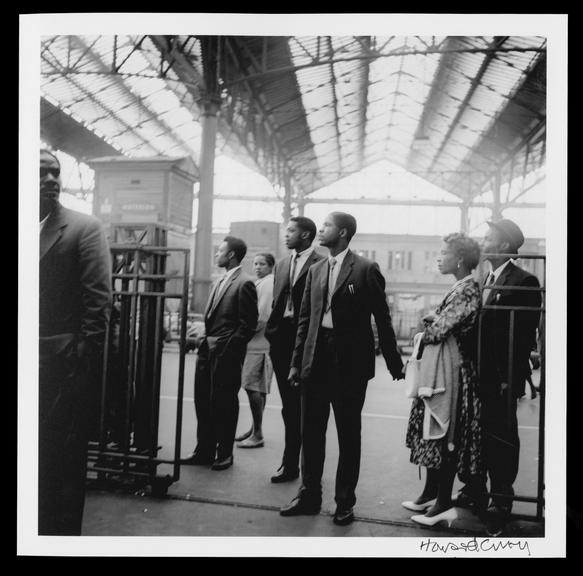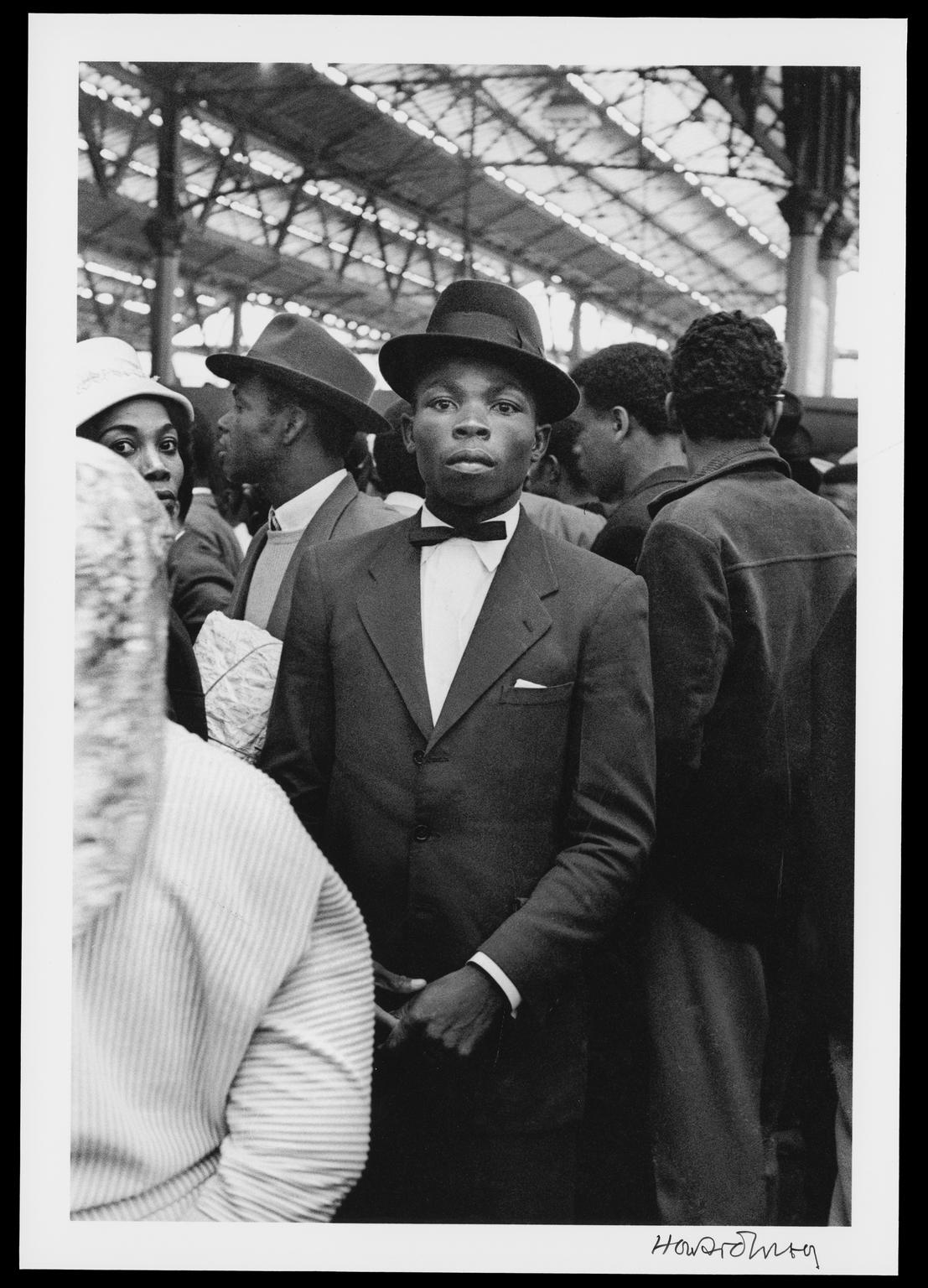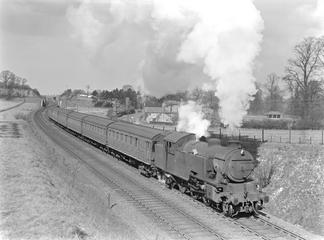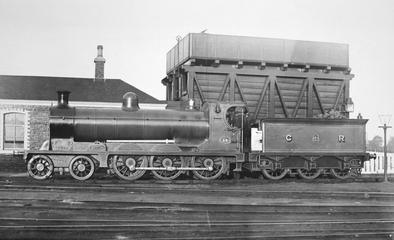
Male passengers looking out of a window of a railway carriage with destination board for 'Southampton Docks' onto a crowded station platform
Male passengers looking out of a window of a railway carriage with destination board for 'Southampton Docks' onto a crowded platform in Waterloo railway station.
More
In May 1962, a then 20-year-old photographer, Howard Grey, went to Waterloo railway station to capture photographs of the last group of West Indian migrants arriving in Britain before the British government’s Commonwealth Immigration Act of 1962 came into force. The Act ended automatic settlement rights in Britain for Citizens of the UK and Colonies (CUKCs) and Commonwealth citizens, who had been encouraged to move to Britain to address labour shortages in the aftermath of the Second World War. People who moved from the West Indies to live and work in Britain during the period 1948-1971 have since been known as the 'Windrush generation', named after the ship, the Empire Windrush, which carried the first large group of West Indian migrants from Kingston, Jamaica to Tilbury, Britain.
- Measurements:
-
overall: 260 mm x 170 mm
- Materials:
- paper (fibre product)
- Object Number:
- 2022-21/1
- type:
- photography
- Image ©
- Howard Grey



